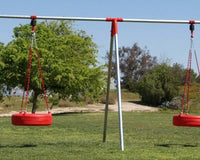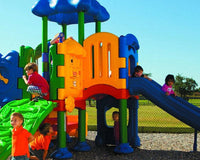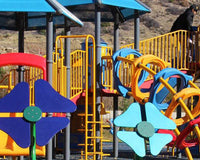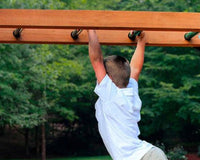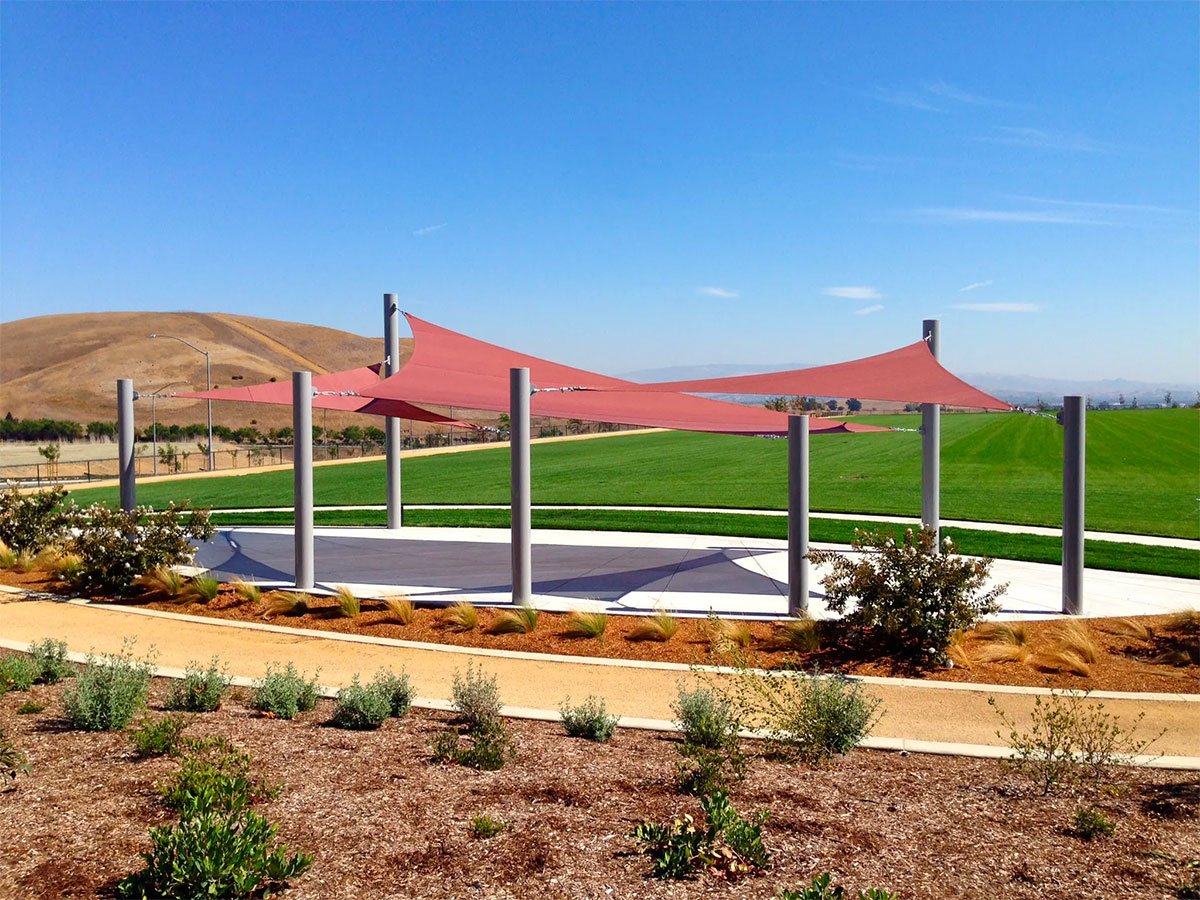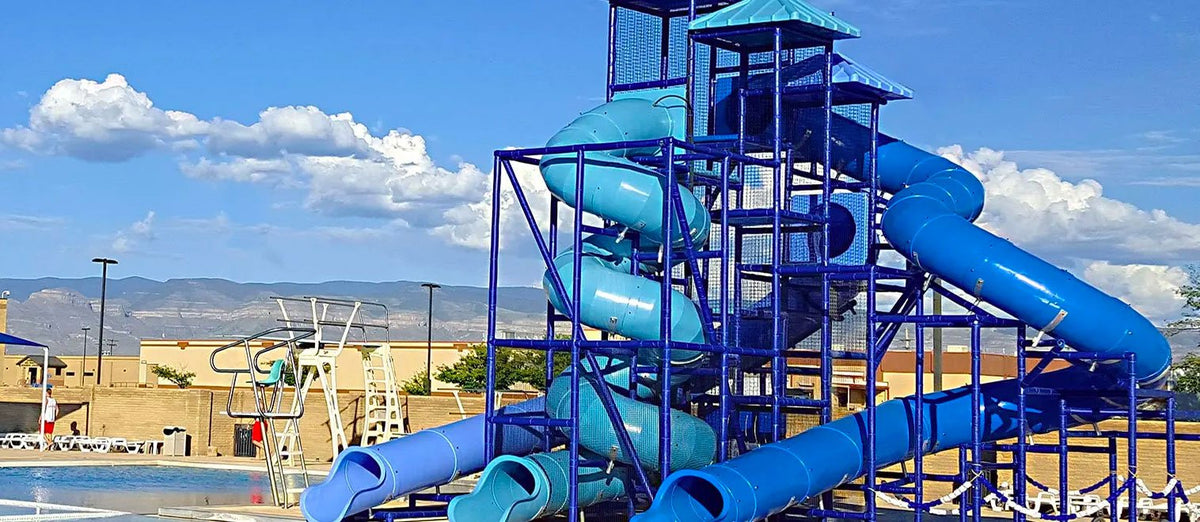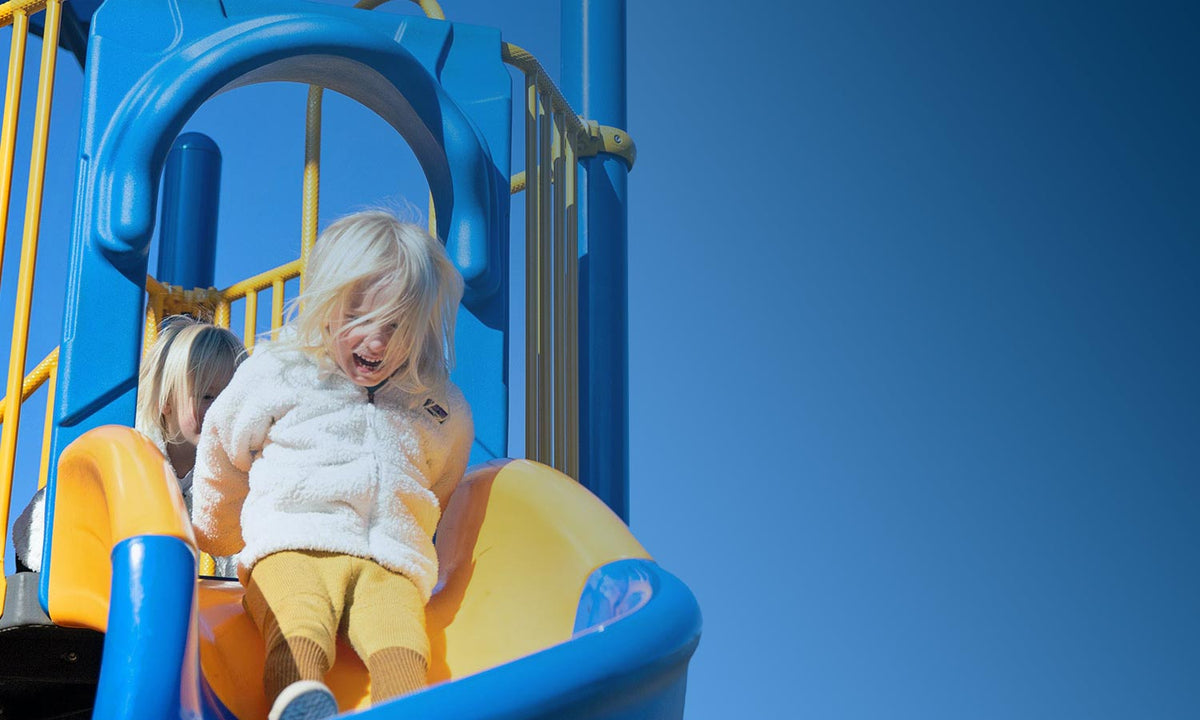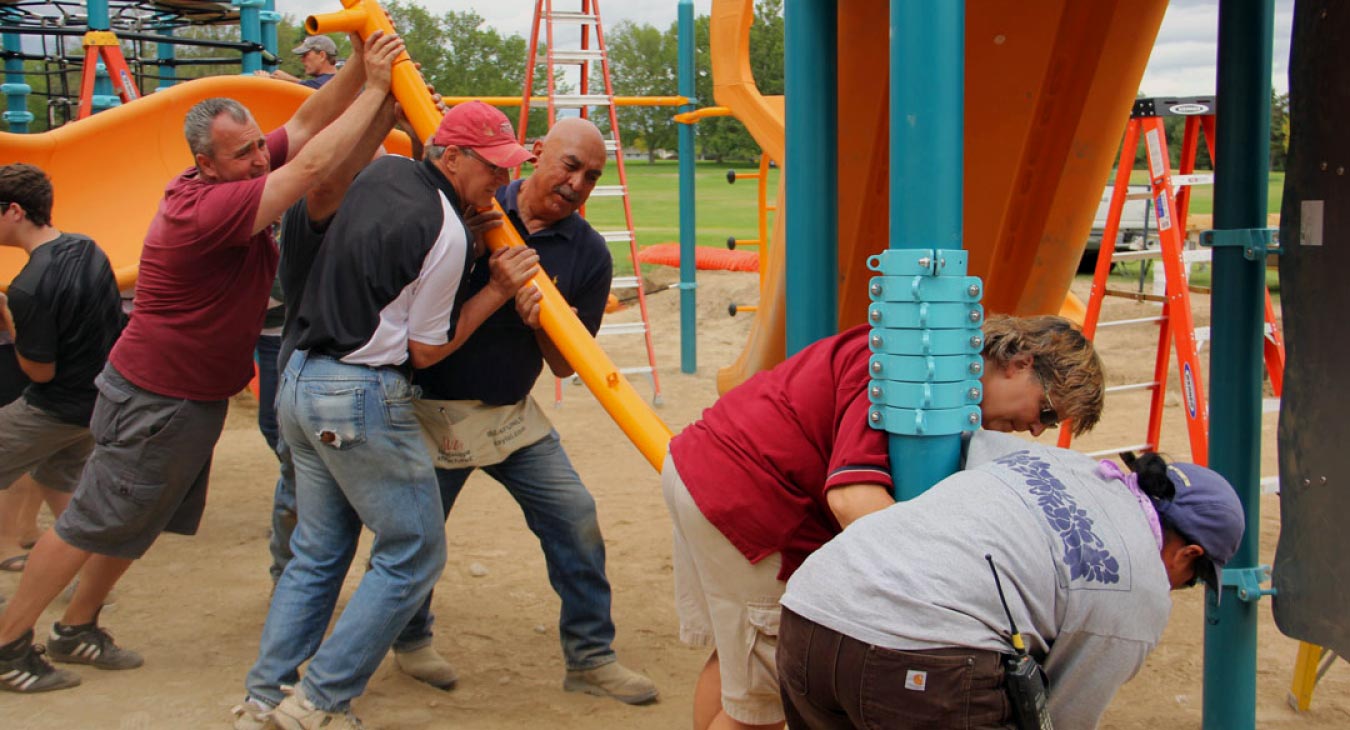Creating a safe, long-lasting play space is a top priority for parks, schools, and recreational areas. If you're looking for a low-maintenance, durable playground surface that offers color, creativity, and protection, poured-in-place rubber might be the perfect solution.
Whether you're retrofitting an existing surface or designing from scratch, this guide will explain what pour-in-place rubber surfacing is, why it's a popular choice, and how it stands up to time, foot traffic, and wet weather.
Let’s dive into the essentials.
What Exactly Is Pour-In-Place Rubber Surfacing?
Pour-in-place (PIP) rubber surfacing is a popular safety flooring choice for playgrounds, parks, and recreational areas. It’s known for being a seamless, two-layer system installed on-site and hand-troweled for a smooth appearance. The surface provides excellent shock absorption, is ADA-compliant, and offers customizable colors and designs to fit any space.
At WillyGoat, we take PIP surfacing to the next level with a precision-engineered three-layer system. Our installation includes a compacted crusher-run sub-base for drainage and stability, a recycled rubber buffering layer designed to meet fall height requirements, and a colorful, design-friendly EPDM top layer.
Why Choose Poured-In-Place Rubber?
PIP rubber surfaces offer major advantages over traditional loose-fill materials like mulch or sand. They provide consistent shock absorption, won’t shift underfoot, and require significantly less maintenance. Plus, PIP systems allow for vibrant designs, school logos, or themed layouts—turning safety surfacing into a creative asset.
WillyGoat’s poured-in-place surfacing enhances those benefits by using premium EPDM granules and SBR-free filler black rubber for better longevity and color retention. Our flooring is expertly installed to meet critical fall height standards while offering superior durability in all climates.
|
Fun Fact: The first public playground in the U.S. opened in 1887 in San Francisco. Early playgrounds were designed to help kids develop social and physical skills. |
What Materials Are Used in Poured-In-Place Rubber Surfacing?
Most PIP surfaces are constructed from two main layers. The base layer is made of recycled SBR rubber that provides important impact cushioning. The top layer consists of colored granules (usually EPDM) that are bonded with polyurethane and troweled smooth to create an attractive, slip-resistant finish. This combination provides a safe, weather-resistant, and customizable surface.
WillyGoat uses a high-quality crusher run for the sub-base, recycled rubber for the buffer layer, and designer EPDM granules up top. Our materials—notably our 100% EPDM and SBR filler-free black granules—are selected for maximum durability and color vibrancy, even in high-traffic or water-prone areas.
How Is a Poured-In-Place Playground Installed?
Poured-in-place (PIP) rubber surfacing is installed through a multi-step process designed to ensure longevity, safety, and proper drainage. Professional installation is recommended to maintain quality and meet fall height standards.
Typical steps include:
- Preparing and grading the site
- Laying a compacted sub-base
- Pouring the rubber base layer (usually recycled SBR rubber)
- Applying the colored EPDM top layer
- Hand-troweling the surface smooth
- Allowing time for curing
When installed correctly, the system creates a seamless, slip-resistant surface that holds up to weather, foot traffic, and active play.
WillyGoat’s installations follow a similar process, with added customization and structural options. Each project includes professional installation, high-quality binder, and your choice of edge finish—curbed or natural.
Color options include 50/50 mixes, solid colors, or custom blends. Installation, binder, and edging preferences are standard with surfaces of 500 sq. ft. or more, ensuring every play area is tailored to fit both design and safety needs.
|
Fun Fact: Playgrounds aren’t just for fun — they help kids build critical thinking and problem-solving skills. Creative play sparks brain development in early childhood. |
Pour-In-Place Rubber vs. Loose Fill Materials
Many playgrounds still use loose fill materials like mulch, sand, or wood chips. However, transitioning to a poured-in-place rubber surface brings undeniable advantages in safety, maintenance, and longevity.
|
Feature |
Poured In Place |
Loose Fill |
|
Safety |
Smooth and ADA-compliant |
Shifts, requiring daily maintenance |
|
Maintenance |
Minimal |
Frequent raking and topping |
|
Life Span |
10-15 years |
1-2 seasons |
|
Fun Colors |
Yes! |
No |
|
ADA Accessible |
Absolutely |
Often difficult |
Installing poured-in-place rubber surfacing creates a more accessible, safer playground for children of all abilities.
Where Can Poured-In-Place Rubber Surfacing Be Used?
Poured-in-place playground surfaces are versatile and adaptable for countless spaces. They’re a favorite choice for areas that need long-lasting, colorful, and ultra-safe flooring.
Common installations include:
- School playgrounds
- City parks
- Daycares
- Accessible zones
- Walking trails
Wherever safety and creativity matter, rubber safety surfacing proves to be a winning solution.
|
Fun Fact: Good playground design includes areas for climbing, swinging, sliding, and balancing. A mix of activities helps children develop different physical and social skills. |
Maintenance and Longevity of Rubber Playground Surfacing
Proper care ensures that your playground surface remains soft, clean, and attractive over time. Routine attention can help maximize the system’s expected life cycle of over a decade.
Maintenance tips include:
- Regular sweeping and rinsing.
- Use mild detergent for occasional stain removal.
- Professional touch-ups around worn foot traffic zones.
With simple, proper maintenance steps, your poured-in-place investment continues to deliver reliable safety and vibrant aesthetics.
Common Signs It’s Time for Repairs
Even the toughest rubber surfacing eventually shows signs of natural wear. Knowing when to repair — instead of replace — can save major costs.
Warning signs to watch for:
- Thinning in wear layers.
- Small cracks or holes.
- Color fading due to UV exposure.
Early repair reduces the risk of bigger surface issues and extends the usefulness of your rubber playground.
|
Fun Fact: Play strengthens friendships. Playgrounds are one of the best places for kids to learn how to make friends. Playing together teaches cooperation, sharing, and communication. |
Design Options and Creativity with Poured-In-Place Rubber
Aside from safety and functionality, poured-in-place surfaces unlock vast opportunities for memorable, playful designs. The possibilities with colored rubber are practically endless.
You can create:
- Custom logos in school colors.
- Giant maps, mazes, or sports-themed tracks.
- Abstract color bursts with multiple shades.
Poured and hand-troweled by skilled installers, these surfaces bring your creative vision to any play space.
Costs Associated with Poured-in-Place Rubber
The upfront cost of installing poured-in-place rubber can be higher compared to loose fill materials, but the lifespan and lower maintenance needs make it a worthy investment.
Factors affecting costs include:
- Total square footage.
- Depth needed for specific fall-height requirements.
- Custom graphics and multiple colors.
- Preparation needs for the existing surface.
By investing once in a professionally poured-in-place playground system, you avoid constant re-spending on annual refills and repairs.

Build a Safer, Happier Play Space Today
Upgrading to poured-in-place rubber surfacing isn’t just about changing materials—it’s about creating a safer, more durable, and visually engaging space where kids can thrive. With its seamless finish, long-term reliability, and critical fall protection, PIP surfacing supports safe, inclusive play for children of all ages and abilities.
WillyGoat provides expert-installed, fully customizable rubber surfacing tailored to your exact needs—whether you're designing for schools, parks, or public spaces.
From custom colors and logos to edge finishes and ADA compliance, we help you build a surface that looks great and performs even better. Start your project today and create a space where safety and creativity come together.




